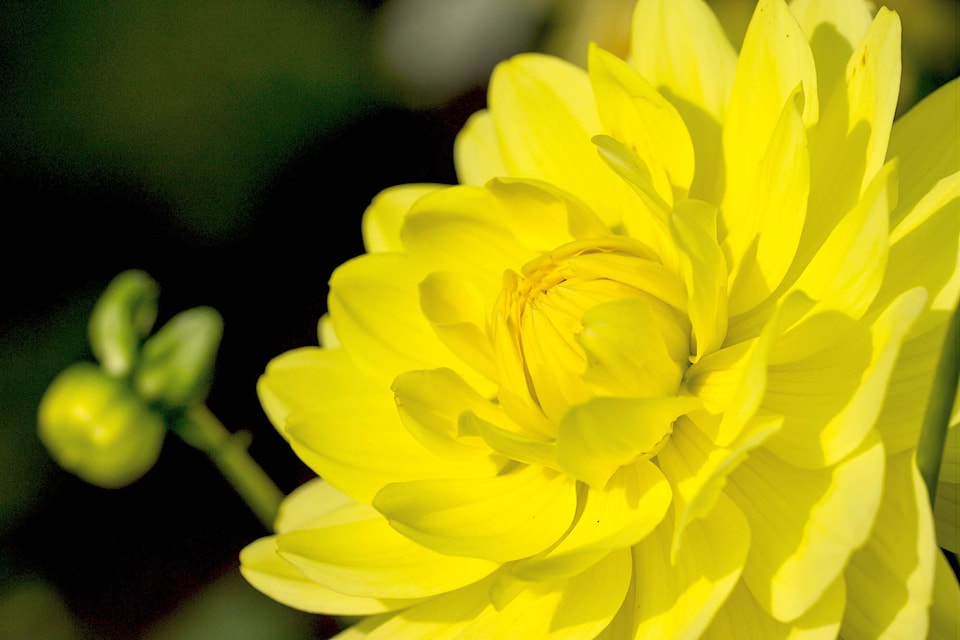By Elaine Nyeholt
Seedy Saturday is March 10 at the Port Clements Community Hall — that’s a great place to take your abundance of tubers, seeds, and cuttings. This event includes a lunch counter and will be open at 11 a.m. The Graham Island East Coast Farmers Institute ably hosts this social function, for those of us who love to meet up with other like-minded individuals. A great deal of information can be had about specific problems, if you ask the right people.
My chosen plants to write about today are all deer-resistant species. The deer don’t like them, giving us a reason to pursue them vigorously. Other plants are fun (but frustrating) to grow because they require fussing with fences and covering, often leaving me annoyed rather than enriched.
There are things to do “inside” for your “outside” garden next summer that are really quite pleasant. It’s time to open up your stored Dahlia tubers and see how well they did through the winter. I’d be very surprised if they froze this year. Check them for mould, and be careful of any eyes that may be developing. Don’t bump them off.
Dividing large clumps is easily done now, and you can make sure your cuts heal by letting them air dry, to prevent rot setting in. Replace the tubers after the cuts heal in fresh, dryish peat moss or shavings for another month or two. Recheck your labels for size and colours if you remembered to do that. It’s tricky if they were not labelled. It’s mostly the height that matters so try to plant long, larger tubers in groups along a back border, as they are usually tall plants with large blooms that require staking. Ideally there will be a fence there. Pom Pom Dahlia have rounder tubers and single Dahlia (which I really like) have even smaller oval tubers. If you have lost your tags, or someone gives you some tubers, hopefully this will help you figure out what kind they are.
The end of March is a good time to get Dahlia potted up in the garage window or the greenhouse for later planting outside, if that is your routine. You will have a longer and earlier blooming season by pre-starting tubers, since they bloom until frost.
Sweetpea seeds can be planted out towards the end of this month. They like a little cold snap to start, but watch out for super wet spots as the rain sets in. They will rot in saturated soil, like the soil near roofs without eavestroughs. I have had minimal luck with the short-spreading sweetpeas that are available. They don’t seem to give a good show for me, but those climbers are amazing and they last well into the first frosts. I planted them in the same place for several years with no problems, so the trellis can stay in place. I do add compost before planting them in the same place to replenish the washed-out nutrients. Sweetpeas want a nice warm summer — that can be a problem for us. Sweetpeas can also be started in plant pots and set out when they are four to five inches (10 cm) tall.
Begonia is the last species I will mention today, because they also are hopefully stored away and should be checked. Mould is the enemy. It grows best as the weather begins to warm up… that is why I suggest checking them now. In a warmer location in your garage window perhaps, you may lightly cover your tubers of begonia — concave side up — on top of some damp peat moss. Let the light inform the inner stirrings of the tubers that it’s time to wake up. The manuals about growing Tuberous Begonia recommend starting them eight to 10 weeks before the last frost. Once the shoots emerge, give lots of water and light. Move the plants to individual four-inch pots once the shoots are three inches tall and remember to turn the pots so they get even light if they are in a window.
There are many other types of begonia as well. Wax Begonia do best from seed or can be purchased from our local nurseries yearly. I prefer to buy them ready to pot up. Rex and Angel Wing Begonia are usually house plants. They are long-suffering and quite pleasant to have around, plus they root readily so are easy to start over when they become too large.
Garden catalogs continue to come in and invigorate my gardening genes. Even if I just putter in the yard and rake out a ditch I feel like I have done something outside.
